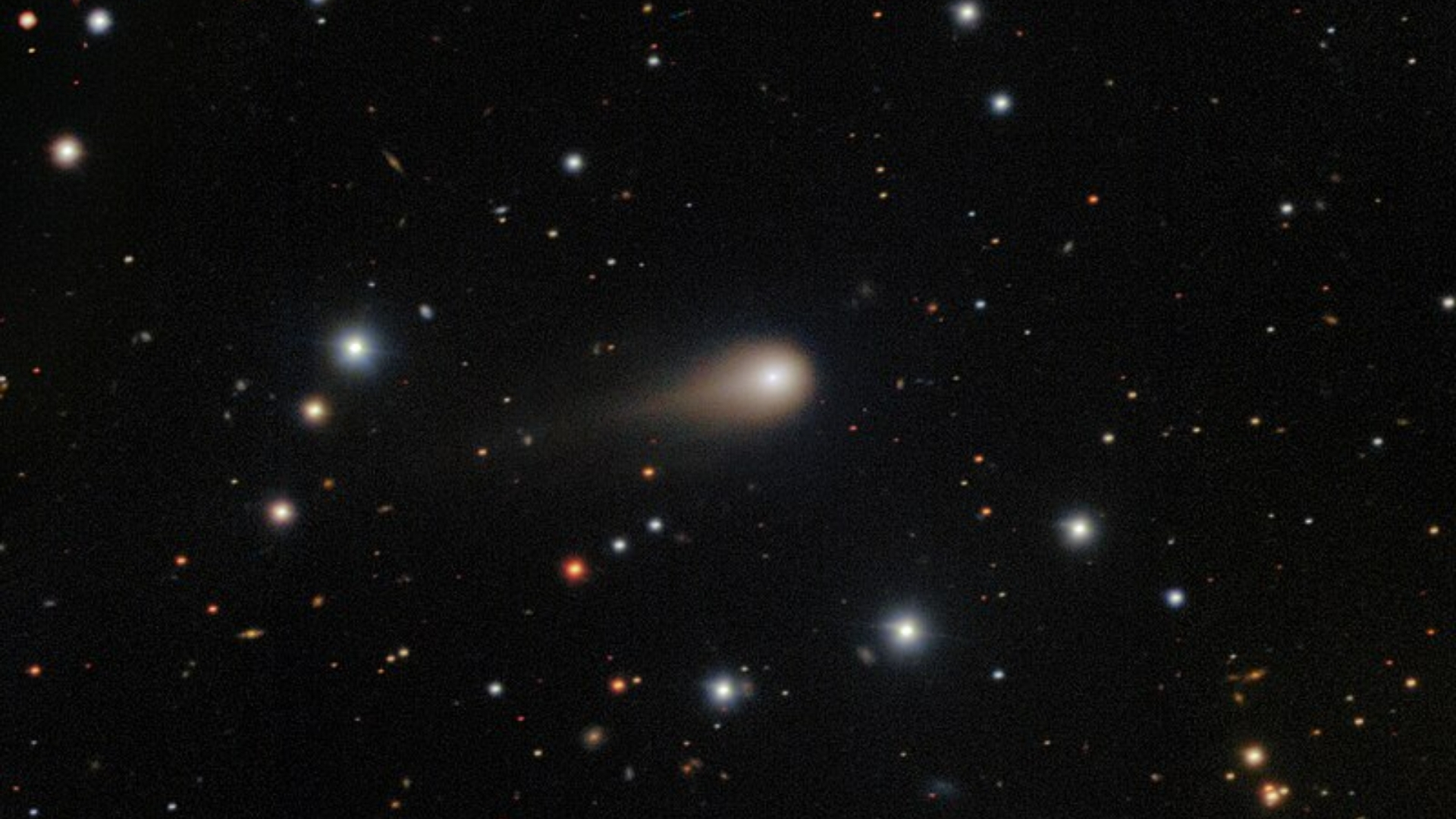Science
Interstellar Comet 3I/ATLAS to Leave Solar System: Watch Live

Interstellar comet 3I/ATLAS is gaining attention as it speeds away from the Sun on a path that will take it out of our solar system. On November 16, 2025, skywatchers can catch a glimpse of its journey through a livestream hosted by the Virtual Telescope Project. The broadcast will begin at 11:15 p.m. Eastern Time (04:15 GMT on November 17) and will feature stunning imagery captured by robotic telescopes located in Manciano, Italy.
This event provides a unique opportunity to observe an interstellar object as it departs our cosmic neighborhood. 3I/ATLAS was first identified on July 1, 2025, and quickly confirmed as the third interstellar object detected within our solar system. Its unusual trajectory distinguishes it from comets originating in the Oort Cloud or Kuiper Belt, solidifying its status as a visitor from beyond.
The comet reached perihelion, its closest approach to the Sun, on October 30, 2025. Since then, it has emerged from the Sun’s glare and is visible to ground-based telescopes once again. On November 11, Gianluca Masi, founder of the Virtual Telescope Project, captured striking images of 3I/ATLAS. His photographs showcased the comet’s glowing central coma and a lengthening ion tail, shaped by the solar wind as it continues its escape from the solar system.
Currently, 3I/ATLAS can be seen rising above the eastern horizon in the hours before dawn, moving through the constellation Virgo. With a magnitude of +10.9, it is too faint to be seen with the naked eye, but amateur astronomers using small telescopes should be able to detect its diffuse glow against the backdrop of surrounding stars.
For those without access to telescopes, the Virtual Telescope Project’s livestream offers the best chance to witness this rare interstellar traveler. The broadcast will provide real-time views and expert commentary, allowing audiences worldwide to follow the comet’s significant journey as it moves away from the Sun.
Interstellar objects like 3I/ATLAS are exceptionally rare. Before this comet, only two others had been confirmed: 1I/ʻOumuamua in 2017 and 2I/Borisov in 2019. Each of these objects has contributed valuable insights into the composition and dynamics of materials originating from outside our solar system. The imminent departure of 3I/ATLAS highlights the fleeting nature of such encounters, making this livestream a significant opportunity for both scientists and astronomy enthusiasts.
As astronomy continues to captivate the public, the chance to witness a visitor from another star system offers a unique perspective on our place in the universe. The livestream on November 16 represents not just an event for observation, but a moment to engage with the cosmos and reflect on the mysteries that lie beyond our reach.
-

 Entertainment3 months ago
Entertainment3 months agoAnn Ming Reflects on ITV’s ‘I Fought the Law’ Drama
-

 Entertainment4 months ago
Entertainment4 months agoKate Garraway Sells £2 Million Home Amid Financial Struggles
-

 Health2 months ago
Health2 months agoKatie Price Faces New Health Concerns After Cancer Symptoms Resurface
-

 Entertainment3 months ago
Entertainment3 months agoCoronation Street’s Carl Webster Faces Trouble with New Affairs
-

 Entertainment2 months ago
Entertainment2 months agoWhere is Tinder Swindler Simon Leviev? Latest Updates Revealed
-

 Entertainment4 months ago
Entertainment4 months agoMarkiplier Addresses AI Controversy During Livestream Response
-

 Science4 weeks ago
Science4 weeks agoBrian Cox Addresses Claims of Alien Probe in 3I/ATLAS Discovery
-

 Entertainment4 months ago
Entertainment4 months agoKim Cattrall Posts Cryptic Message After HBO’s Sequel Cancellation
-

 Entertainment2 months ago
Entertainment2 months agoOlivia Attwood Opens Up About Fallout with Former Best Friend
-

 Entertainment3 months ago
Entertainment3 months agoMasterChef Faces Turmoil as Tom Kerridge Withdraws from Hosting Role
-

 Entertainment4 months ago
Entertainment4 months agoSpeculation Surrounds Home and Away as Cast Departures Mount
-

 World2 months ago
World2 months agoCole Palmer’s Mysterious Message to Kobbie Mainoo Sparks Speculation





















